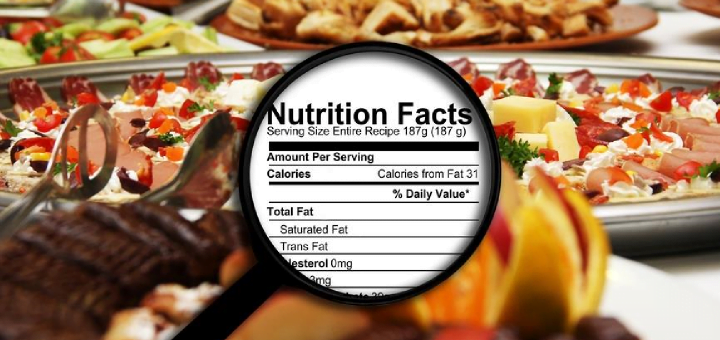
As March is winding down, so is National Nutrition Month – an awareness campaign sponsored by the Academy of Nutrition and Dietetics. The goal of National Nutrition Month is to help people better understand their food choices, develop healthy eating habits, and promote living a physically active lifestyle.
Even though most people start out the new year with resolutions to eat healthier and lose weight, it’s easy to let those goals slide as the year goes on. Schedules get busier, lives get hectic, and new things to focus your energy on somehow seem to pop up every day.
Next time you’re out grocery shopping though, take a quick look at those nutritional facts on the side of what you’re buying – it’s a quick and easy way to gauge the health pros (or cons) to effortlessly keep you on track with your goals! Here are some quick tips to make sure you’re reading those labels right and getting the most information out of them as you can. Let’s break it down into sections:
Serving Size
This top section is especially important – and where companies will most likely try to trick you! Even though the serving sizes are given in standardized units like cups or pieces, pay extra attention to the number underneath: servings per container. With things like a bottled drink, the serving size might say 8 fluid ounces, but the entire bottle is 16 fluid ounces. You just doubled the amount of calories, fat, and sugar listed on that nutrition label.
For other things though, like a box of cereal, you probably won’t eat the whole container in one sitting. But still think about how many individual servings you’re eating at once. Just because the serving size is ½ a cup, and the whole box has 12 servings, doesn’t mean you’re only eating one individual serving at a time.
Don’t let these simple math tricks trip you up on your way to a healthier diet!
Calories
People count calories all the time as a way to lose weight, but what exactly are calories? They’re a way of measuring the amount of energy you get out of what you’re eating. You only gain weight when you consume more calories than you burn off.
On every nutrition fact label, there are percent values next to each item listed. Those are the recommended daily values (% DV) of how much of each nutrient you’re recommended per day. How are these numbers calculated? They’re based off of a 2000 calorie-per-day diet. Why 2000 calories? You might think it’s the magical number that doctors recommend – and it partially is – but mainly it just makes for simple math so that those % DV numbers can be easily calculated and compared.
Not everyone should follow the 2000 calories-per-day rule. In fact, that’s only what’s recommended for a roughly 130 pound female to maintain her weight. Depending on your gender, weight, level of activeness, and overall goal of trying to lose, maintain, or gain weight, your personal recommended caloric intake can vary greatly from that.
On the left side of each nutrition label, the total number of calories per serving is listed. To the right of that lists the amount of calories from fat. We all know that fat is bad so the lower that number, the better.
The Nutrients
The big picture for the nutrients listed is to aim high for vitamins, minerals (calcium, iron, etc.), and fiber and aim low for fat, cholesterol (including sugar), and sodium. What exactly defines high and low? The general rule is anything above 20% is high and anything below 5% is low.
Label Requirements
For anything with more than one ingredient, the nutrition label is required to list out all the ingredients in descending order by weight. That means the item listed first is present in the largest amount and the item listed last is present in the lowest amount. Pay attention to those preservatives, sugary flavor additives, and coloring dyes!
These days, a lot of different foods make grand health statements – like claiming to be low fat, or high in fiber. Which labels can you trust? Luckily the Food and Drug Administration (FDA) has strict guidelines to help you determine just exactly what those claims mean:
- Low calorie: Less than 40 per serving
- Calorie free: Less than 5 calories per serving
- Low cholesterol: Less than 20 mg of total cholesterol and less than 2 g of saturated fat per serving
- Fat free/sugar free: Less than ½ gram per serving
- Low sodium: Less than 140 mg per serving
- Reduced: Less than 25% than the normal product
- Good source of: Provides at least 10% of the daily value of the specified nutrient per serving
- High in: Provides at least 20% of the daily value of that particular nutrient per serving
- High fiber: 5 or more grams per serving
Now that you’re armed with all the knowledge to decipher those nutrition fact labels, you’re ready to tackle the grocery store and get back on track to fulfilling those New Year’s resolutions and maintaining a healthy, nutritional diet!
—
Like what you see? Sign up to join Human Health Project, a community-based, not-for-profit website focused on using peer to peer health support for a healthier you.
—





Very important information about nutritional facts, this really helps to improve health and keeps active